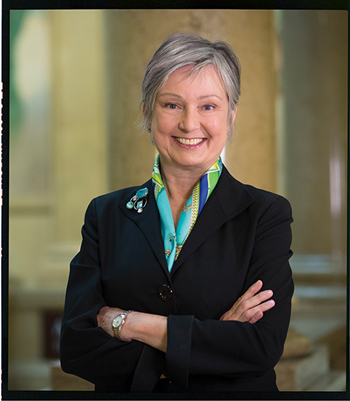 Winter 2014
Winter 2014|
"I was drawn to Carnegie Museums because I believe that the arts and sciences contribute immeasurably to the quality of human life—in some ways that can be measured and some ways that can't."
|
After 10 weeks on the job, I can honestly say that every day I am still discovering new reasons to be excited about and proud of the work that we do here at Carnegie Museums. In this issue of the magazine, you’ll find articles about some—but only some—of those reasons. This past fall, Carnegie Science Center continued to expand its impressive work in the area of STEM (science, technology, engineering, and math) education, a topic that is essential to both economic development and informed citizenship. The Science Center not only provides STEM programming directly to school students across our region; as you will read, it is also conducting meaningful research on public perceptions and attitudes toward STEM as well as helping teachers and school districts assess and improve their own STEM offerings. The story on the late artist and former nun Corita Kent will introduce you to a woman who combined art, spirituality, and activism—and whose example helped shape “Power Up,” The Andy Warhol Museum’s after-school and summertime program for girls. And you’ll read about noted photographer Duane Michals (whose retrospective is up now at Carnegie Museum of Art and is not to be missed!) and other regional collectors who talk about why it matters that people both collect and donate art. You’ll also meet the most complete titanosaur ever discovered. (“Titanosaur” was a new term to me, too: It’s a diverse group of long-necked dinosaurs that includes some of the largest dinosaurs to walk the earth.) The tale of how Carnegie Museum scientist Matt Lamanna participated in a discovery that’s been internationally heralded is further evidence of the universal importance of research conducted by great natural history museums such as ours. What I love about these stories, taken together, is that they draw a compelling picture of the connections between our museums and the world around them. Whether it’s by supporting school districts or publishing important scientific findings, connecting young women with their own powerful voices or building communities of collectors, the four Carnegie Museums are contributing to the world far beyond Oakland and the North Shore and affecting audiences that may never, or very rarely, set foot in the museums themselves. I was drawn to Carnegie Museums because I believe that the arts and sciences contribute immeasurably to the quality of human life—in some ways that can be measured and some ways that can’t. The stories in this issue offer just a few examples of how the work of our museums radiates out to touch hearts and minds. Very truly yours,
Jo Ellen Parker
|
Changing the Equation · To Have and to Hold · Art Responding to Life · Living Large · NewsWorthy · Face Time: Tim Pearce · Artistic License: An American Treasure in the Making · About Town: Ask a Scientist · Science & Nature: Painting the Parade of Life · Travel Log · The Big Picture
 |
Copyright © 2017 CARNEGIE Magazine. All rights reserved. |


